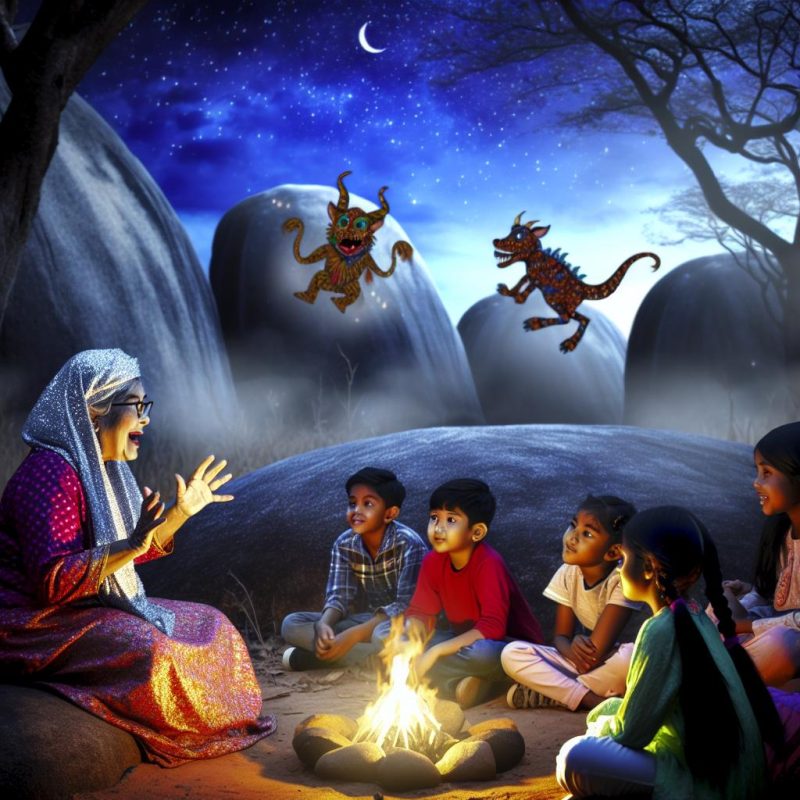Introduction to Traditional Storytelling and Folklore
Traditional storytelling and folklore are integral parts of human culture and history. These narratives reflect the values, beliefs, and experiences of various communities across different cultures and regions. Passed down through countless generations, often through oral tradition, they have continually evolved to accommodate shifting social and cultural changes.
Definition of Folklore
Folklore represents a rich collection of customs, stories, and beliefs that are shared within a particular group of people. This concept includes an array of elements such as myths, legends, folktales, proverbs, songs, and rituals. Functioning as a repository of communal knowledge, folklore plays an integral role in reinforcing group identity. Predominantly transmitted through oral traditions, certain elements are also recorded and preserved in written form to ensure their continued transmission.
Role of Storytelling in Folklore
Storytelling is a fundamental component of folklore. It serves both as a method of entertainment and as a vital medium for education. Through the act of storytelling, communities have the ability to pass on important life lessons and cultural values to younger generations. The storytellers, often revered figures within their communities, fulfill a crucial role by preserving these narratives and presenting them in captivating ways.
Functions of Storytelling
Traditional storytelling fulfills multiple roles within a community. As an educational tool, it teaches moral lessons and essential life skills. It also serves as a mechanism for social control, helping to establish and reinforce shared norms and values. Additionally, storytelling provides entertainment, offering enjoyment through dramatic narratives and imaginative tales that captivate the audience.
Elements of Folktales
Folktales usually encompass several distinctive elements. Characters in these tales are often larger than life, with clear distinctions drawn between good and evil. Plots tend to be straightforward, presented with a clear moral or lesson at the conclusion. The settings of folktales are typically timeless and somewhat vague, frequently starting with phrases like “once upon a time.”
Themes and Motifs
Folktales commonly explore themes such as justice, bravery, love, and wisdom. Recurrent narrative elements, known as motifs, include magical objects, challenging quests, or archetypal characters such as the trickster or the wise elder. These themes and motifs create familiar patterns that resonate across tales and cultures, allowing audiences to connect more deeply with the stories.
Impact of Modernization
The modernization of societies introduces new challenges for traditional storytelling and folklore. The processes of urbanization and technological advancement have transformed the ways stories are shared. However, these digital platforms have simultaneously created novel opportunities for the preservation and adaptation of these narratives. Many communities embrace the capacity to document their folklore in digital formats, ensuring that these stories endure for future generations.
Preserving Tradition
To combat the potential loss of cultural heritage, efforts to preserve traditional storytelling have emerged globally. Initiatives such as recording oral narratives, organizing storytelling festivals, and incorporating folklore into educational curricula strive to ensure the continuity of these treasured cultural inheritances. With the passage of time, these initiatives become ever more crucial.
Importance of Cultural Preservation
Cultural preservation efforts are essential for maintaining continuity and a sense of communal identity within societies. By documenting and sharing folklore through diverse channels, people can both strengthen their ties to the past and foster a deeper understanding of their heritage. Moreover, the incorporation of folklore within educational systems not only enriches the learning environment but also helps in nurturing an appreciation for cultural diversity among students.
Conclusion
Traditional storytelling and folklore are significant components of cultural heritage worldwide. These time-honored practices are vital for maintaining cultural continuity and a strong sense of communal identity. As technologies evolve, they present opportunities not only for the survival of storytelling but also for its transformation and growth. Preserving folklore is a critical task that demands collaboration among communities, governments, and cultural organizations. For further exploration of folklore and its preservation, you may explore resources provided by institutions such as the Library of Congress.
The rich legacy of traditional storytelling and folklore underscores the power of narratives to reflect human experiences, values, and shared histories. Continued efforts to preserve these cultural treasures ensure that future generations will inherit and build upon this invaluable heritage. As societies engage with and adapt these narratives to modern contexts, the timeless appeal and universal significance of storytelling endure.

